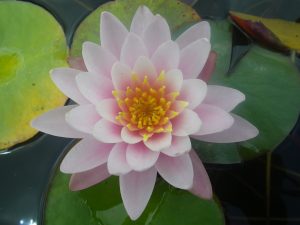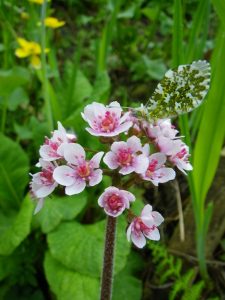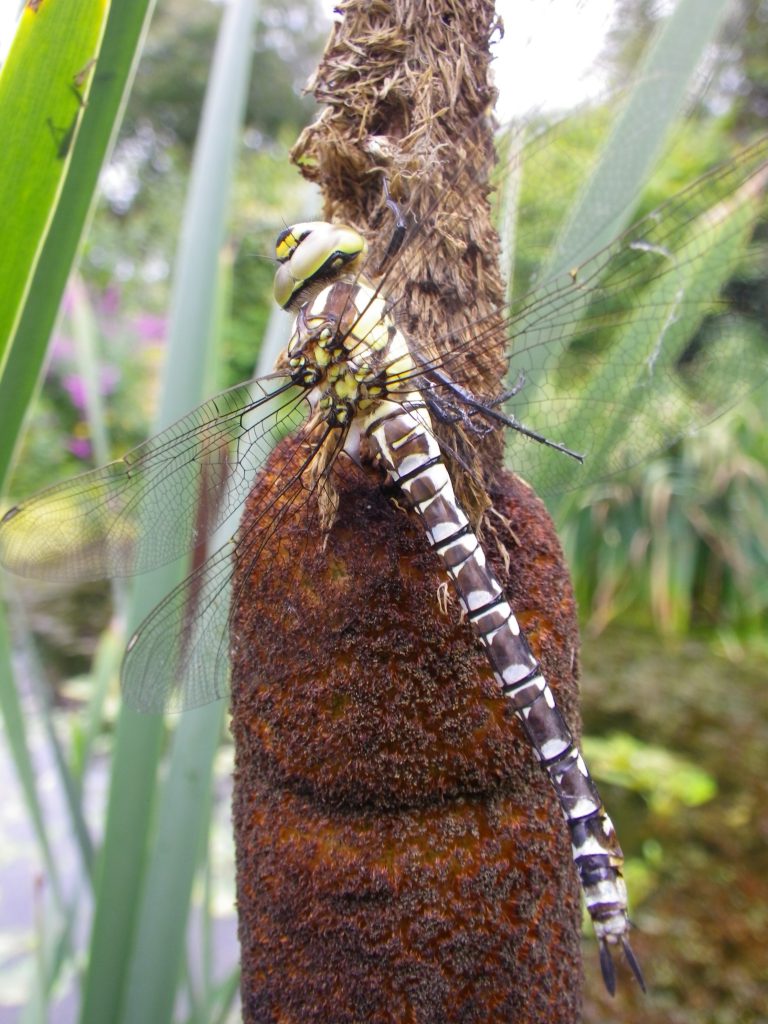Welcome to my blog; depending on where you live in the UK you will either have experienced extreme heat and/or torrential rain or simply much the same as usual. Whatever your views on global warming the weather certainly seems unpredictable these days. It all makes for an interesting life but is hard on plants!
People often ask me if it is safe to top up their ponds using mains tap water, and although mains water varies considerably around the country, as far as plants are concerned the answer is generally yes. The only drawback in some areas is that tap water is high in nitrates, which are a plant food. You might think this beneficial, but the whole aim in achieving a balanced pond that isn’t unduly affected by blanket weed and other algae is to keep the nutrients locked up in the soil in the plants’ baskets and not dissolved in the water. So, if your tap water is high in nitrates you could possibly get a bloom of green algae, but this is likely to be temporary and better than letting the roots of your marginal plants dry out. If you’re worried about the nitrate level, then test kits are readily available. Personally I’m not a great fan of chemical pre-treatments and prefer to let nature take its course. If you have plenty of plants, they will soon mop up any bonus nitrates, and if you haven’t – well, buy some more from me!
 It’s still not too late to divide your water lilies; advice on how to do this can be found under FAQs/Information/Water lily information. You really need to complete this task before the end of August, since after then active growth will gradually cease and new roots will not form. There is then the danger that various fungal and bacterial rots can set in to the cut roots and tuber, causing gradual dieback.
It’s still not too late to divide your water lilies; advice on how to do this can be found under FAQs/Information/Water lily information. You really need to complete this task before the end of August, since after then active growth will gradually cease and new roots will not form. There is then the danger that various fungal and bacterial rots can set in to the cut roots and tuber, causing gradual dieback.
I still have some great deals available on white water lilies; most years I sell three white lilies to every one of other colours but for some reason this year everybody has wanted pink or red ones. The result is that I still have some excess stock of Albatross, Hermine and Virginalis, all good sized tubers with plenty of leaves and flower buds at special prices during August.
If you’re planning any sizeable ponds then there are some fantastic deals on quantities of 24 and over of water Irises including Iris Louisiana Black Gamecock, Iris pseudacorus, Iris versicolor mixed, Iris virginica and many other plants too, please ask for my late summer special offer list. The more you buy, the cheaper they get!
 Late summer/early autumn is a great time for dividing and replanting many plants and is best of all for those with chunky tuberous rootstocks like Rodgersia and Peltiphyllum. These plants take a very long time to make new roots, and if they are divided and replanted in spring the new leaves can form before the roots have been produced; the leaves can then suck the rhizome dry, causing failure.
Late summer/early autumn is a great time for dividing and replanting many plants and is best of all for those with chunky tuberous rootstocks like Rodgersia and Peltiphyllum. These plants take a very long time to make new roots, and if they are divided and replanted in spring the new leaves can form before the roots have been produced; the leaves can then suck the rhizome dry, causing failure.
Dragonflies and damselflies are now laying eggs in numbers and if you sit for a while and pay attention you may see one emerge from its final pupal case and slowly expand its wings – surely one of the true wonders of nature. In case you didn’t know, dragonflies are generally larger and come to rest with their wings spread, whereas damselflies are smaller and rest with their wings folded in line with their bodies. Mostly!


